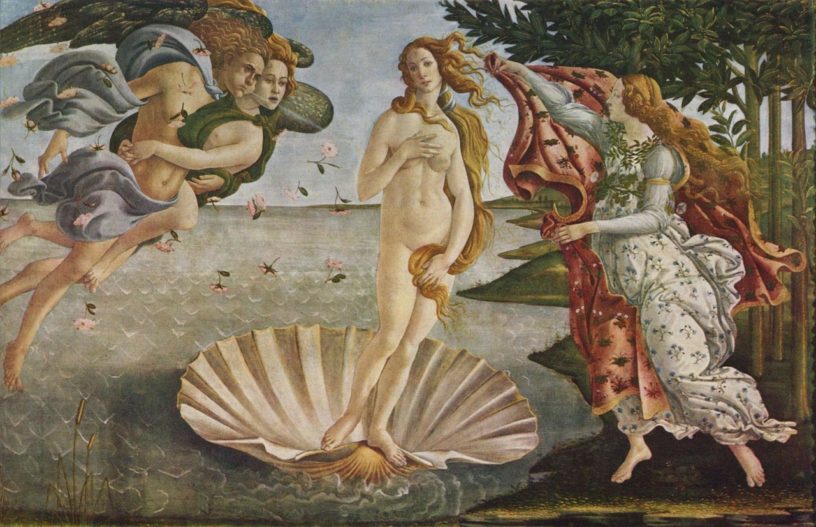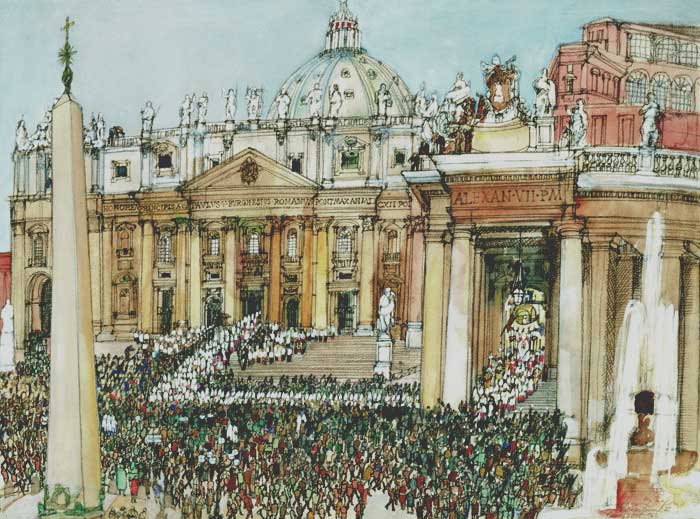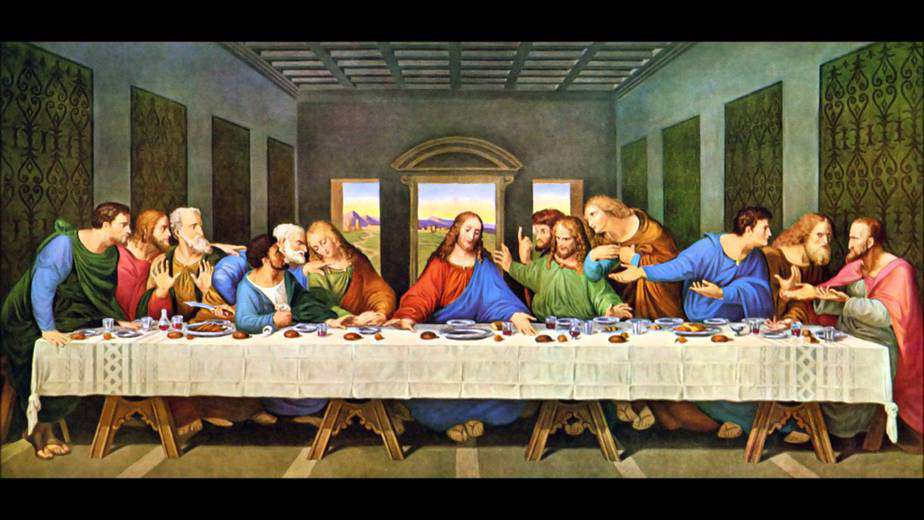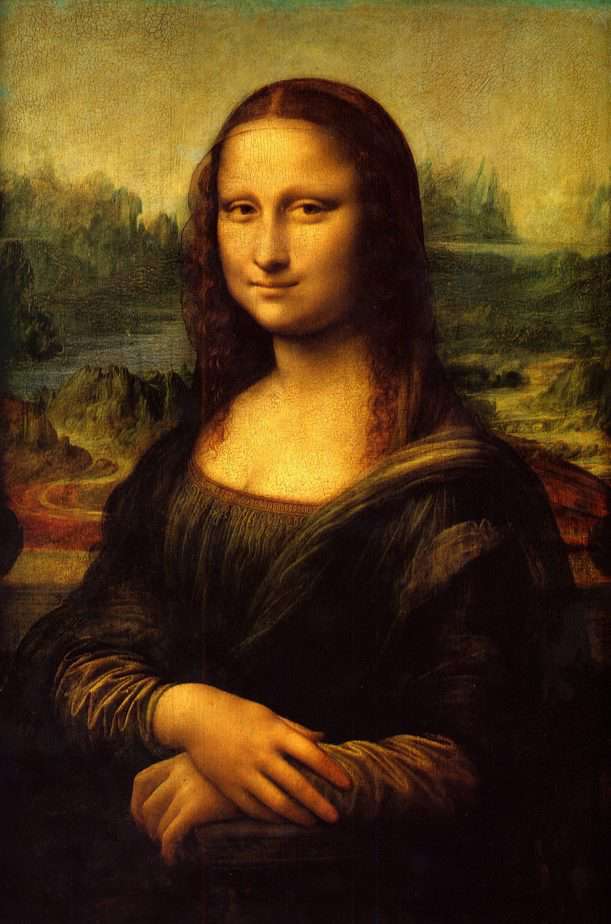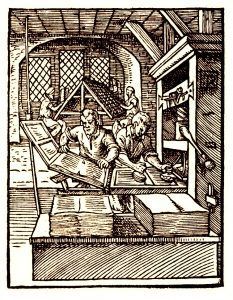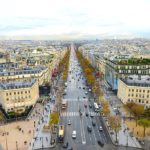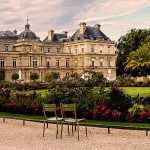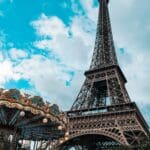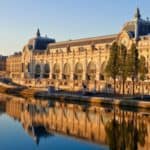Top 15 Interesting Facts about The Renaissance
*Originally published by Angelah on October 2022 and Updated by Vanessa R on August 2023. Updated by Ruth in March 2024.
Imagine a world without books and newspapers, without music, beautiful paintings, art, carvings, and sculptures, without technology. In short, imagine a world without civilization. Boring, right? A lot of what we experience in the world today in terms of art, architecture, and music is a result of a European revolution; a re-birth and a time the world changed, its genesis being Italy. The Renaissance.
Here are 15 facts to help us better understand the Renaissance, and why it is very important!
1. This is what defined the Renaissance Era
The renaissance marked the end of the Middle Ages. The era marked a different way of thinking and a different way of doing things.
The renaissance era was the time between the Middle Ages (500AD-1500AD) and the Modern Era. This was a period when the Renaissance Man, also known as people who were knowledgeable in many areas; for example, Leonardo da Vinci was coined. Christianity also saw a revolution when Martin Luther King contested the Catholic Church which was extremely powerful at the time, therefore bringing out Protestantism. This also was known as the Age of Exploration when the Americas were discovered by Columbus as well as the discovery of sea routes by people like Vasco da Gama.
Italians studied the ancient Roman way of life, literature, and other things and realized that the people in that era lived a different life. That is why there were advancements in most spheres of lives from the 1300s in things like music, poetry, art, and education, that were meant to make lives better and enjoyable for people.
2. High Renaissance
The Mona Lisa by Leonardo da Vinci, the Statue of David by Michelangelo, and the School of Athens by Raphael were done during the period, known as the High Renaissance, a period of exceptional artistic production.
While Michelangelo and Leonardo da Vinci are more popular and would be more credited with being the main Renaissance painters, Giotto di Bondone, a painter from Florence was the first to try something new in painting, leaving the Byzantine style that was used in the middle ages and opting to paint people and things as they were instead of the standard abstract painting.
Another fact that intrigues me is the fact that Michelangelo and Leonardo da Vinci used to dissect human bodies to be able to draw and sculpt humans accurately! Well, it was illegal for people who were not physicians to dissect bodies, but they somehow found a way to do it and they were the only two who could sculpt and draw people just the way they were! Was it talent or proper research?
The two were rivals, Michelangelo was known to have made fun of Leonardo da Vinci for failing to finish a sculpture of a horse! Imagine that!
3. King James Bible
The King James Bible was printed during the Renaissance period together with other texts that were being printed during that time, with the Church being very popular and the richest entity, this Bible became the most popular. The team of scholars and translators who released the Bible had been working on it for seven years and was finished in 1611.
4. The origin- Re-birth
We need to thank the Italians for introducing the Renaissance period to the world. The renaissance period started in Italy and spread to other parts of Europe. The word Renaissance, however, is a French word which means re-birth which means that people at that time were beginning to look at a lot of things with renewed interest, and a lot of things changed at that time. The period is marked as being between the Middle Ages and the Modern Era, some people saying it was between the 14th and 17th centuries.
5. A period of enlightenment
The renaissance period is one of the turning points and one of the most important periods in the world’s history. Think art, think architecture, think poetry, music, fashion, and technology!
The reason that the renaissance period started in Italy was that the country was extremely wealthy and therefore the rich were willing to spend their money on things like art, and music.
6. The printing revolution
In 1450, Johannes Gutenberg introduced printing to Germany and extended his prowess to the whole of Europe; forever changing the history and future of text preservation and duplication. The great migration of Byzantine scholars who fled to Italy from Constantinople and promoted their texts of Roman and Greek origin to the region also enhanced the world of literature during this period. With Gutenberg’s innovation, the spread of information and ideas allowed for the spread of the Renaissance.
7. It brought about a better understanding of Humanism
The renaissance period is marked by the popular ‘Father of Humanism’, Francesco Patrarcha a poet and scholar who studied and spread ideas and poems to other poets throughout Europe and also marked the widespread of the Renaissance. His studies of poetry and philosophy from Ancient Rome became an inspiration to many in his field. Humanism meant that people realized the importance and value of man in the world. Humanism meant that for one to lead a moral and effective life, the Greek and Latin lessons were important! Aspects such as accounting were intensified in the Renaissance era, works on bookkeeping and accounting were published in that time, some done by the Father of Accounting Luca Pacioli.
8. Cultural movement
The Medici family was a wealthy family of bankers who used their resources to sponsor artists to further their humanist movement. The family settled in Florence in the 1400s. This period marked the advancements in the scientific revolution and artistic transformation. One fun fact, during this period, Florence and Rome were rivals, even though they were the center of it all. Rome would eventually be elevated by the Pope, therefore, beating Florence. The Medici family can be seen in most paintings from the era, they are the people at the back, wearing red holding money!
9. The sciences
During this period, the sciences grew in leaps and bounds, this is the era where chemistry and biology were embraced and replaced Aristotelian natural philosophy. The medical research area grew as much as the other spheres of research. Filippo Brunelleschi the architect made major advancements in design and math, Francis Bacon the Lord Chancellor, Isaac Newton the physicist, Galileo astronomer, physicist and engineer, and Rene Descartes the philosopher among others were also some of the talented minds that put in work and made marks during the renaissance period.
10. Funny facts!
Imagine, during this period, men were considered immature for marriage before they were 30 years old! This means a man could not marry before that age and women could get married at the age of 17! Talk of maturity age differences.
Another weird fact about the Renaissance period, women could not play wind instruments because they made their faces look weird, but they could only play string instruments. And oh, women were not allowed to look at themselves in front of windows because it roused desires in men which meant it would drive them away from God! Jeez!
11. People from Florence and Rome were rivals
The great towns of Florence and Rome were rivals who developed as cultural epicentres throughout the Renaissance, despite the fact that they presently reside in the same nation. The Popes’ efforts to elevate their sacred city would lead to Rome eventually surpassing Florence.
12. Italian cities were super rich
During the 14th century, industrial production and trade allowed the Italian city-states to amass enormous wealth. This wealth lubricated the cities and made it possible for an artistic movement to emerge and thrive.
13. In this period there were a lot of ideas circulating
After the Ottomans eventually took control of Constantinople, a large number of former Byzantine academics fled to Italy and brought back their books with Greek and Roman roots to the area.
The conditions for the Renaissance to flourish would be set by this along with Johannes Gutenberg’s invention of the printing press, which permitted the dissemination of ideas and information.
14. Renaissance also took place outside Europe
Along with the Northern Renaissance, which occurred outside of Italy in Europe, the Renaissance encompassed numerous movements. The Northerners used an updated form of the Gothic style with extremely fine details rather than incorporating elements of the Italian Renaissance.
15. Michelangelo preferred sculpting to painting
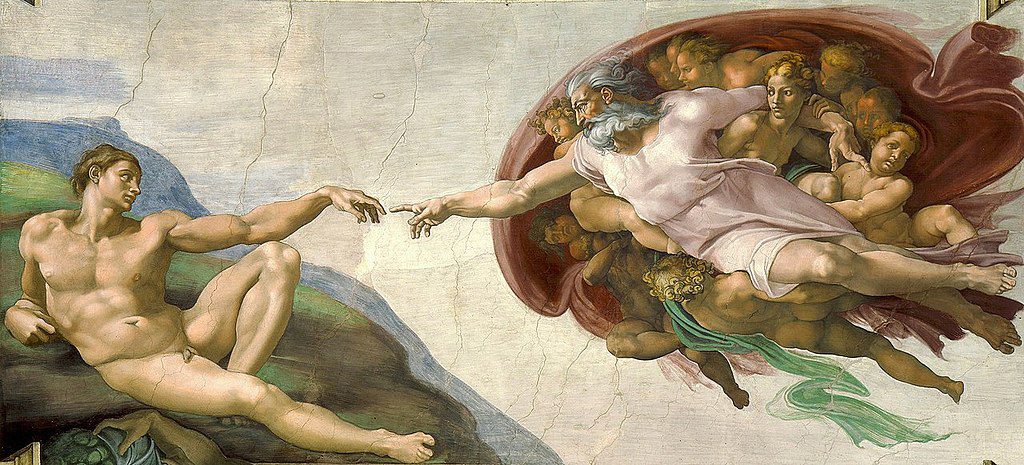
Michelangelo by Creation of Adam from wikimedia commons
The ceiling fresco in the Sistine Chapel, which has come to represent the Renaissance, is one of the most well-known pieces of art in the entire world. Even though everyone agrees that Michelangelo is the brilliance behind this work of art, he was forced to complete it.
He loved to create sculptures, and when the project first got underway, he collaborated with other artists, whom he finally fired in order to complete the work alone. The almost 1,000 square meter space would require him four years to complete.
5 most famous Renaissance art
1. The Birth of Venus by Sandro Botticelli

Sandro Botticelli, CC BY-SA 4.0, via Wikimedia Commons
Sandro Botticelli, an Italian painter, created The Birth of Venus in the mid-15th century. The painting portrays Venus, the goddess, rising from the water and approaching the land as she gives birth. The Uffizi Museum in Florence, Italy is where the painting is currently displayed. The image is closely associated with The Primavera, another legendary painting by Botticelli which is also kept at the Uffizi, although they are not a pair.
These paintings, which represent the Italian Renaissance, are among the most well-known in the entire world. Large-scale representations of figures from classical mythology have been rare in Western art since history. In The Birth, a naked female figure is both big and important, which is nearly unheard of.
2. Primavera by Sandro Botticelli
Primavera is a big tempera painting on a panel created by the Italian Renaissance artist Sandro Botticelli around the second half of the 1470s or the beginning of the 1480s. It is named after the Italian word for spring. A group of classical mythological characters are seen in the painting together in a garden, but no underlying story has yet been identified that unites them.
Many critics agree that the picture is an illustration of Renaissance Neoplatonism, which was a popular topic of discussion in Florence at the time, based on the lush blooming of Spring.
3. The Creation of Adam by Michelangelo Buonarroti

Michelangelo, Public domain, via Wikimedia Commons
The Creation of Adam is a fresco artwork by Michelangelo that was created between 1508 and 1512, and it is part of the Sistine Chapel’s ceiling. In the biblical creation story from the Book of Genesis, God gives life to Adam, the first man of humankind, as depicted in this artwork.
The fresco is the fourth panel in a series of panels that chronologically illustrate the Genesis tales, and it is part of a sophisticated iconographic design. The Creation of Adam is one of Michelangelo’s religious paintings that has been reimagined and imitated countless times, making it one of the most reproduced items on this list.
4. The Last Supper by Leonardo Da Vinci
The Last Supper is a mural painting believed to be created by Italian High Renaissance artist, Leonardo da Vinci, between 1495 and 1498. Based on the Gospel of John, the painting depicts Jesus and his twelve apostles during their last supper.
It is a well-known masterpiece of Western art and is revered for its exceptional handling of space, expert use of geometric perspective, emotional depth, and the movements of its subjects. Many art historians consider it a pivotal work in the transition into what is now known as the High Renaissance.
5. The Mona Lisa by Leonardo Da Vinci
Italian artist Leonardo da Vinci painted the half-length portrait of Mona Lisa, which is considered the quintessential masterpiece of the Italian Renaissance and one of the most famous pieces of art in the world. Among the most admired aspects of the painting are the subject’s enigmatic expression, the subtle tones, and the striking use of light to create depth and atmosphere.
The painting is oil on a white Lombardy poplar panel and is believed to depict Lisa Gherardini, the wife of Italian nobleman Francesco del Giocondo. However, since Da Vinci never gave the painting to the Giocondo family, this cannot be confirmed. It is assumed that he left it to his beloved apprentice Sala in his will.
15 Most Bizarre Renaissance Trends and Customs
The Renaissance period left an indelible mark in history. Read more as we traverse the peculiar landscapes of fashion, lifestyle, and cultural eccentricities that defined this transformative period. From blackened teeth as a symbol of sophistication to oversized ruff collars challenging the boundaries of practicality, these peculiarities offer a glimpse into the Renaissance spirit that dared to defy expectations, creating a legacy of oddities that continues to captivate our imagination centuries later.
1. Wealthy individuals would intentionally blacken their teeth as a sign of sophistication
During the Renaissance, an intriguing trend emerged among the wealthy elite – intentionally blackened teeth. This practice involved applying substances like rust or plant dyes to the teeth, transforming them into shades of black. Far from the modern pursuit of pearly whites, this bizarre custom was considered a sign of sophistication and refinement. The deliberate discolouration of teeth was embraced as a fashion statement, highlighting the stark differences in beauty standards across historical eras.
The reasoning behind blackened teeth varied. Some believed it masked dental imperfections, while others thought it demonstrated a lack of interest in manual labour, as stained teeth were associated with the leisure class. This peculiar fashion trend exemplifies the sometimes perplexing ways in which societal norms and perceptions of beauty evolve over time.
2. Venetian treacle was believed to be a cure for various ailments

Hieronymus Bosch, Public domain, via Wikimedia Commons
In the realm of Renaissance medicine, Venetian treacle stands out as a particularly bizarre remedy. This concoction consisted of viper flesh, opium, and honey, and was believed to possess healing properties. The Renaissance era was marked by a fascination with alchemy and unconventional remedies, and the Venetian treacle reflects this interest. Despite its dubious ingredients, this elixir was thought to cure a variety of ailments, serving as a testament to the era’s unorthodox approach to healthcare.
3. Large, elaborate ruff collars were fashionable among the elite
Among the Renaissance elite, large and elaborate ruff collars became a fashionable statement. These collars, made of fine fabrics like lace or linen, were not only ornate but also impractical. Some ruffs were so immense that wearers required special supports, including wire frameworks, to keep them upright. The complexity of these collars often symbolized social status, and individuals would endure the discomfort for the sake of fashion. The ruff collar trend showcases the extreme lengths to which people would go to display their wealth and status during this period.
4. Art and jewellery often featured skulls to remind people of their mortality

Sandro Botticelli, Public domain, via Wikimedia Commons
In a reflection of the prevailing philosophy of memento mori or remember that you must die, Renaissance art and jewellery frequently featured skull symbolism. This macabre motif served as a reminder of mortality and the transient nature of life. Skulls, crossbones, and other morbid symbols adorned everything from paintings to accessories, emphasizing the importance of contemplating one’s mortality amidst the opulence of the Renaissance period.
5. Venetian women wore chopines, towering platform shoes that could reach absurd heights
Venetian women of the Renaissance era embraced a peculiar fashion trend known as chopines which are towering platform shoes. These elevated footwear reached absurd heights, often necessitating the use of supports to maintain stability. The primary function of chopines was to elevate the wearer, making a statement about their social standing. However, the impractical height restricted mobility and altered the wearer’s gait, creating a distinctive and somewhat awkward walking style. Chopines exemplify the extremes to which Renaissance fashion could be taken in the pursuit of social status and individual expression.
6. The idea of sprezzatura encouraged the art of making everything seem effortless

Raphael, Public domain, via Wikimedia Commons
In the Renaissance, the concept of sprezzatura, as introduced by Baldassare Castiglione in The Book of the Courtier, was a fascinating cultural phenomenon. Sprezzatura encouraged individuals to master the art of making everything appear effortless, even when significant effort was involved. This concept was not just about skill but also about a certain nonchalance and grace. The ideal courtier, according to Castiglione, should effortlessly embody excellence in various pursuits, from sports to conversation, creating an illusion of natural talent and ease.
7. Men flaunted exaggerated and padded codpieces, exaggerating their groin area
A peculiar Renaissance trend that garnered attention was the flamboyant use of codpieces by men. These were exaggerated and padded coverings for the groin area, often elaborately adorned. The size and style of the codpiece became a symbol of virility and status. This fashion statement reflected the societal emphasis on masculine prowess and, in some cases, served as a form of conspicuous display of wealth and masculinity.
8. Women’s headdresses took on fantastical shapes, reaching towering heights

Public Domain, CC BY-SA 4.0, via Wikimedia Commons
Renaissance women adorned themselves with extravagant headdresses known as hennins. These headpieces took on fantastical shapes, reaching towering heights. Some were cone-shaped, resembling spires, while others featured veils or other elaborate adornments. The hennin headdresses were a symbol of high fashion and social status, emphasizing the lengths to which individuals would go to showcase their wealth and adherence to prevailing beauty standards.
9. The concept of vomitoriums is often misunderstood
The concept of vomitoriums in the Renaissance is often misunderstood. While they did exist, they were not rooms for inducing vomiting during feasts. Instead, vomitoriums were passageways in amphitheatres designed to efficiently disperse large crowds. This architectural feature allowed spectators to enter and exit quickly, preventing congestion. The misconception surrounding vomitoriums highlights the intrigue and occasional misinterpretation of historical practices.
10. Men and women alike wore shoes with extremely elongated, pointed toes

Columbus Metropolitan Library, Public domain, via Wikimedia Commons
A striking and somewhat comical trend during the Renaissance was the widespread use of pointed shoes by both men and women. These shoes featured extremely elongated, pointed toes, with the length of the points varying. Some were so extreme that wearers needed additional support to walk. The pointed shoe trend was not just a fashion statement but also a reflection of social status, as impractical footwear became a symbol of elevated standing in society. The exaggerated length of the shoes added an element of whimsy and extravagance to Renaissance fashion.
11. Wearing powdered wigs became fashionable in the later Renaissance
During the later Renaissance period, the fashion of wearing powdered wigs gained popularity, especially among the aristocracy. These wigs, often adorned with ribbons and other accessories, were not only a stylish trend but also a symbol of social status. The whiteness of the powdered wigs became associated with cleanliness and refinement, while the elaborate decorations reflected the wearer’s wealth and influence. This peculiar fashion trend endured for several centuries, becoming an iconic symbol of aristocratic elegance.
12. Women wore farthingales, hooped skirts that created a distinctive bell shape

Formerly attributed to Steven van der Meulen, Public domain, via Wikimedia Commons
Women’s fashion in the Renaissance included the use of farthingales and hooped skirts that created a distinctive bell shape. These wide skirts were supported by hoops or wires, resulting in a voluminous silhouette. The width of farthingales was often so substantial that women needed to navigate doorways with caution. This exaggerated fashion trend showcased the elaborate and sometimes impractical nature of Renaissance attire, emphasizing societal standards of beauty and elegance.
13. In Italy, small windows called buchette del vino were built into buildings
In Italy, during the Renaissance, small windows known as buchette del vino were incorporated into buildings. These wine windows were utilized for anonymous wine sales during periods when direct contact was avoided, possibly during the plague. Merchants behind the windows could sell wine to passersby without direct interaction, contributing to both public health and the flourishing wine trade. The wine windows provide a fascinating glimpse into the practical adaptations made during times of societal challenges.
14. Physicians advocated laughter therapy as a cure for various ailments

BMK, CC BY-SA 3.0, via Wikimedia Commons
In the realm of Renaissance medicine, physicians advocated an unconventional remedy known as laughter therapy. It was believed that laughter could balance the humour, promoting overall well-being and serving as a cure for various ailments. This precursor to modern laughter therapy reflects the Renaissance fascination with unconventional medical practices and the interconnectedness of physical and mental health.
15. Noblewomen kept giant rats as exotic pets
Noblewomen in the Renaissance displayed a peculiar fascination with exotic pets, and among them were giant rats. These oversized rodents were kept as pampered companions and were sometimes adorned with jewellery. The trend showcased the Renaissance elite’s interest in the unusual and exotic, as well as their desire to flaunt their wealth through the possession of unique and extravagant pets. The keeping of giant rats as pets provides a whimsical and unexpected glimpse into the eccentricities of Renaissance aristocratic life.
Planning a trip to Paris ? Get ready !
These are Amazon’s best-selling travel products that you may need for coming to Paris.
Bookstore
- The best travel book : Rick Steves – Paris 2023 – Learn more here
- Fodor’s Paris 2024 – Learn more here
Travel Gear
- Venture Pal Lightweight Backpack – Learn more here
- Samsonite Winfield 2 28″ Luggage – Learn more here
- Swig Savvy’s Stainless Steel Insulated Water Bottle – Learn more here
Check Amazon’s best-seller list for the most popular travel accessories. We sometimes read this list just to find out what new travel products people are buying.

